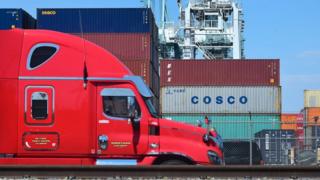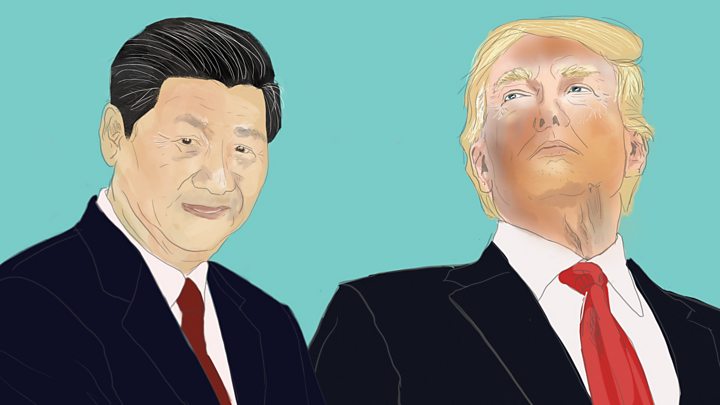 Image copyright
AFP
Image copyright
AFP
China has said it will levy new tariffs on more than 5,200 US products, if the White House moves forward with its latest tariff threat.
The State Council outlined the plan just days after the US said it was considering higher tariffs on $200bn of Chinese goods than initially planned.
Chinese officials accused the US of "unilaterally" heightening tensions between the two economic giants.
They said the duties would range from 5%-25% on $60bn worth of US products.
The White House says its tariffs are a response to China's unfair trade policies, including subsidies and rules that require foreign companies to bring on local partners.
President Donald Trump blames the practices for putting US companies at a disadvantage and helping to create a trade deficit.

Talks this spring between the two countries about the matters failed to produce an agreement.
A first round of tariffs came into effect on 6 July, when the US imposed 25% taxes on $34bn of Chinese imports. China retaliated in kind.
Tariffs on another $16bn of products are pending, the second part of tariffs on $50bn worth of imports that the US announced in March.
US threats have escalated since, with the president saying he is ready to impose tariffs on all $500bn of Chinese imports.
In July, the US published a list of $200bn-worth of additional products to be hit with tariffs of 10% - a figure the US is now considering raising to 25%.
In Friday's announcement, China said it is readying tariffs on US items that include agriculture and energy products, leather and machinery.
Beijing said the timing of the new tariffs would depend on whether the US follows through on its threat.
Trade flows
China accounted for about 16% of America's trade in goods last year. The country exported about about $500bn in goods to the US and imported about $130bn.
The tensions are already having an effect on trade flows.
The US trade deficit - the gap between exports and imports - widened by 7.3% to $46.3bn in June. The deficit had narrowed in previous months as companies rushed out exports to beat the imposition of tariffs.
The trade deficit with China rose by 1% to $33.5bn.